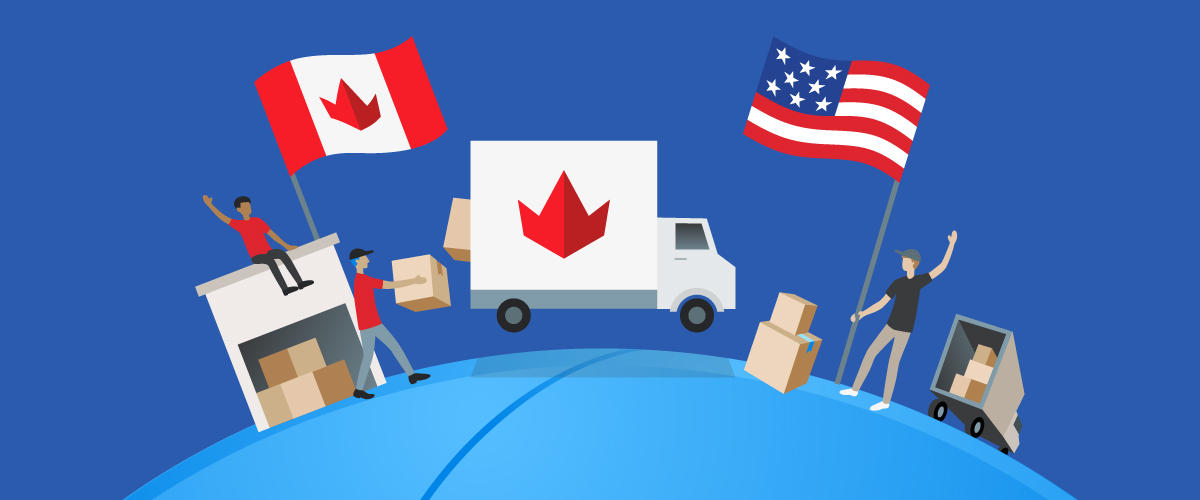Introduction
Shipping goods across international borders is a complex endeavor that involves a multitude of regulations, logistics, and considerations. When it comes to shipping from Canada to the United States, two neighboring countries with strong trade ties, the process may seem straightforward at first glance. However, beneath the surface, there are numerous intricacies and requirements that shippers must navigate to ensure a smooth and successful transaction. In this article, we will explore the key factors involved in shipping from Canada to the US, providing valuable insights for businesses and individuals looking to engage in cross-border trade.
The Canada-US Trade Relationship
Before delving into the logistics of shipping from Canada to US, it’s important to understand the significance of the trade relationship between these two North American giants. Canada and the United States share the longest international land border in the world, and they engage in one of the most extensive bilateral trade relationships globally.
According to the United States Trade Representative (USTR), Canada was the United States’ largest goods trading partner in 2020, with over $600 billion in total two-way goods trade. This robust trade relationship is facilitated by a network of highways, railways, and ports that connect the two countries, making it relatively seamless for goods to move back and forth. However, successful cross-border shipping still requires careful planning and adherence to various regulations.
Key Considerations for Shipping from Canada to the US
Documentation and Customs Clearance
One of the first and most crucial steps in shipping from Canada to the US is ensuring that you have the necessary documentation and permits in place. This includes:
Commercial Invoice: A detailed invoice specifying the goods being shipped, their value, and the terms of sale.
Bill of Lading (BOL): A document that serves as evidence of the contract of carriage between the shipper and the carrier.
Certificate of Origin: This document specifies the country of origin of the goods, which can affect tariff rates and customs requirements.
Customs Declaration: Required for the entry of goods into the US, this form provides customs authorities with information about the goods and their value.
Importer Security Filing (ISF): Also known as the “10+2” rule, this filing requires importers or their agents to submit information about the shipment 24 hours before it’s loaded onto a vessel bound for the US.
Tariffs and Duties
Understanding the tariff rates and duties that apply to your goods is crucial when shipping from Canada to the US. The United States International Trade Commission (USITC) provides the Harmonized Tariff Schedule (HTS), which classifies goods for customs purposes and specifies the applicable tariffs. It’s essential to correctly classify your goods to ensure you pay the appropriate duties and taxes.
Customs Brokerage Services
Given the complexities of US customs regulations, many shippers choose to enlist the services of a customs broker. Customs brokers are experts in navigating the customs clearance process, ensuring that all documentation is in order and helping to expedite the release of goods. While this is an additional cost, it can save time and prevent potential customs-related issues.
Shipping Methods and Carriers
Selecting the right shipping method and carrier is another critical decision in the shipping process. Common options for shipping from Canada to the US include ground transportation, airfreight, and ocean freight. The choice will depend on factors like the type of goods, urgency, and budget.
Packaging and Labeling
Proper packaging and labeling are essential to ensure the safe and efficient transit of goods. Packaging should be robust enough to protect goods during transportation, and labels must comply with US regulations, including those related to product safety and labeling.
Regulatory Compliance
In addition to customs regulations, shippers must be aware of other regulatory requirements that may apply to specific products. This could include compliance with agencies such as the Food and Drug Administration (FDA) or the Environmental Protection Agency (EPA), depending on the nature of the goods being shipped.
Transportation Insurance
Protecting your shipment with transportation insurance is a wise move, especially for valuable or fragile goods. It provides peace of mind in case of loss or damage during transit.
Cross-Border Security Programs
To expedite the border crossing process, consider enrolling in cross-border security programs such as the Customs-Trade Partnership Against Terrorism (C-TPAT) or the Free and Secure Trade (FAST) program. These programs offer benefits such as reduced inspections and faster processing times.
The Shipping Process
Once all necessary preparations are in place, the shipping process itself involves several key steps:
Goods Pickup: Arrange for the pickup of your goods by your chosen carrier or logistics provider. Ensure that all documentation is provided to the carrier.
Transportation to the Border: Goods are transported to the US-Canada border crossing point, which may be a land border or a designated port of entry.
Customs Clearance: Customs authorities on both sides of the border will inspect and verify documentation. The goods will be subject to customs duties and taxes, if applicable.
Transit to Destination: After customs clearance, the goods are transported to their final destination in the United States.
Delivery: The goods are delivered to the consignee or recipient.
Conclusion
Shipping from Canada to the US is a process that involves careful planning, adherence to regulations, and consideration of various factors. The Canada-US trade relationship is one of the most significant in the world, driven by the extensive flow of goods between the two countries. To ensure a successful cross-border shipment, it’s essential to prepare all required documentation, understand tariff rates and duties, consider customs brokerage services, select the right shipping method, and comply with relevant regulations.
By following these steps and staying informed about the ever-evolving trade landscape between Canada and the United States, businesses and individuals can navigate the complexities of cross-border shipping and continue to benefit from the strong economic ties that bind these neighboring nations.





